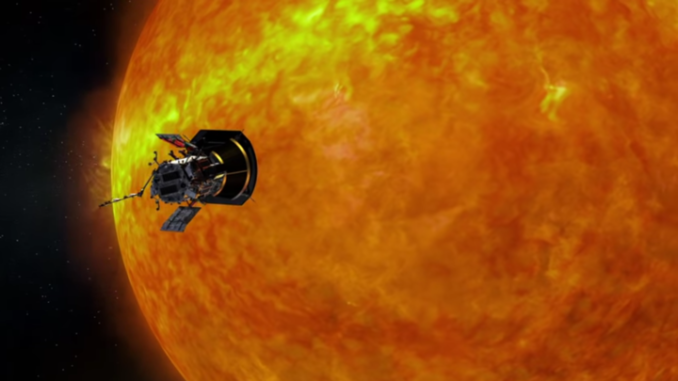
Last Friday, Valentine’s Day, the Night Owl introduced you to Professor Emeritus Eugene Parker and his role in, and contributions to, heliophysics – which is the scientific study of the Sun and its effects. Today (which is President’s Day, by the way) the Owl will discuss Dr. Parker’s namesake, the Parker Solar Probe, its purpose and a bit about what it’s already accomplished.
It’s important for humans to gain a deep understand of the Sun not only for the safety of astronauts, satellites and other spacecraft, but also for the safety and benefit of Earth-bound people and equipment.
The 1859 Carrington Event caused little damage on Earth, limited mostly to telegraph systems as there wasn’t much else in the way of electrical infrastructure. Today if a coronal mass ejection (CME) like Carrington’s hit Earth, the consequences could be severe to all manner of electronics and electrical systems which would result in profound and disastrous effects on humans.
Even minor disturbances to Earth’s magnetosphere from solar activity can interfere with electronic communications, such as radio and television signals. The Parker Solar Probe is designed to enter the Sun’s corona to help us learn as much as possible about the corona and the solar wind.
The Parker Solar Probe has three detailed science objectives:
• Trace the flow of energy that heats and accelerates the solar corona and solar wind.
NASA/The Johns Hopkins University Applied Physics Laboratory.
• Determine the structure and dynamics of the plasma and magnetic fields at the sources of the solar wind.
• Explore mechanisms that accelerate and transport energetic particles.
Launched August 12, 2018, the Parker Solar Probe is meant to complete 24 orbits around the Sun, with the aid of seven Venus gravity assist flybys. To date, the probe has completed four orbits of the Sun and three Venus flybys.
The probe is in a long elliptical orbit that takes it close by the Sun at perihelion (the point in the orbit at which the spacecraft is closest to the Sun) and then back out to the orbit of Venus. This instructive NASA video (2:24) animation clearly demonstrates the orbital mechanics involved.
The gravitational pull of Venus on the spacecraft modifies the probe’s trajectory, sending it in an ever tighter orbit and closer to the Sun. The pull of the Sun increases the probe’s speed. As a result, Parker Solar Probe sets new records for spacecraft velocity and close approach (proximity) to the Sun on each orbital pass. The probe made it’s fourth pass on January 29, with a speed of 393,042 km/hour (244,225 mph) at an altitude of just 18.7 million km (11.6 million miles) above the surface of the Sun.
No spacecraft has been sent to explore the corona before because the extraordinarily high temperatures would quickly render ordinary spacecraft useless. The Parker Solar Probe has a special heat shield, called the Thermal Protection System (TPS) that protects the spacecraft and it’s instruments from the heat of the Sun as it flies through the corona.
A few of the probe’s discoveries to date:
• There are many small solar flares that cannot be observed from Earth, because of their diminutive size.
• The solar wind rotates (along with the Sun) at much higher velocities than predicted.
• The discovery of magnetic field switchbacks, which appear (at least initially) to be caused by different parts of the solar wind moving at different speeds.
To better understand these discoveries, I recommend this video:
“The First Results Of Parker Solar Probe’s Visits To The Sun” (10:08)
Question of the night: When you wish upon a star, do you know who you are?
